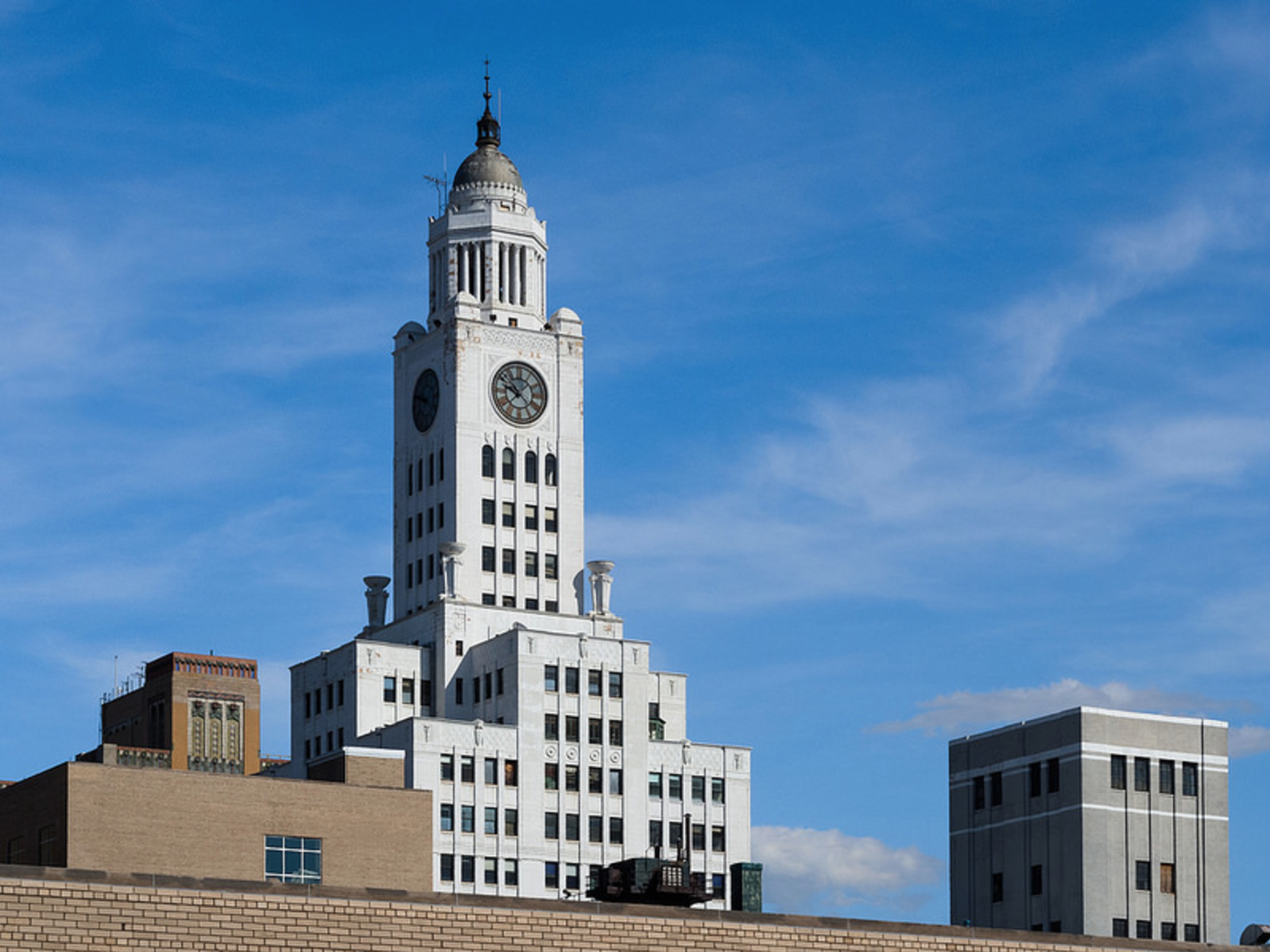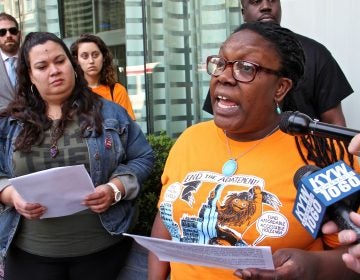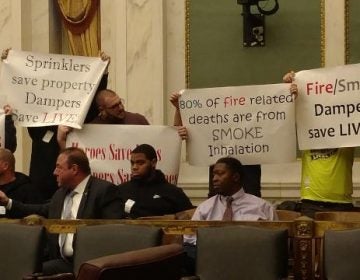Council renegotiates financing and project diversity goals for new police headquarters

City Hall is a whirlwind of activity as City Council nears its summer recess, which begins after next week’s session. Amid furious last-minute negotiations about the Kenney administration’s Rebuild initiative, substantial changes have also been made to the city’s plans for building its new police headquarters at 400 North Broad Street.
Fresh financing and project labor diversity are at the center of the shifting approach to get the police into the former home of the Philadelphia Inquirer and Daily News at 400 North Broad Street.
Councilman Allan Domb is behind a new financing deal between the city and real estate mogul Bart Blatstein, who purchased the former Inquirer-Daily News building in 2011 for $22.6 million.
At a presentation to councilmembers last month, Domb—a real estate mogul in his own right—requested more information on the financial details of the city’s proposed deal with Blatstein. When he got that information, the councilman offered to help draft a new deal with Blatstein that he says will save the city a vast amount of money. (Blatstein wouldn’t comment for this story.)
“He doesn’t want to take credit for it but I’m going to give him the credit,” said Councilman Bobby Henon, who chairs the Public Property Committee, of Domb’s work. “He’s the one that made it happen.”
Blatstein wants to access the federal Historic Tax Credit program as part of the renovation of 400 Broad Street, which is more than 90 years old. But the program is only available for historic buildings that are then used for an income-generating purpose for at least five years. Under the original deal, Blatstein would have taken an adjustable-rate mortgage (ARM) to pay for the renovation and then rented it to the city, thus generating income and making it eligible for the tax credit. Then after the tax credit’s required income-producing period expired, the city would have gone to the market to get a loan to purchase the building outright, or assumed the mortgage from Blatstein.
Domb thought those scenarios would open the city up to unnecessary risk if it had to take out a loan of such magnitude nearly ten years from now. Who knows what the interest rate would be in 2026 of 2027? It almost certainly wouldn’t be lower than today.
“My whole goal is to mitigate our risk,” said Domb, when approached on the council floor Thursday. “The biggest piece here is not having interest rate risk. This is the opposite of kicking the can down the road.”
Under the new proposal, Blatstein would take an assumable mortgage for more than $250 million at a fixed interest rate not to exceed 3.75 percent. The city signed an agreement with Blatstein that would allow it to assume the fixed-rate loan at any time in the next 19 years with today’s interest rates intact. In addition, Henon said that Domb got Blatstein to drop the price by $10 million from more than $260 million.
Domb complicates that narrative a bit, saying the price adjustment occurred because he didn’t want the city to be saddled with a penalty if it paid off the loan in the 8th or 9th year. (Prepayment would allow the city to pay less interest throughout the life of the loan.) The lender wasn’t willing to do that, but Blatstein agreed to adjust the price upfront–lowering it by the amount of the penalty–to ultimately address Domb’s concerns.
In a letter to Commissioner for Public Property Bridget Collins-Greenwald, dated June 15, 2017, Blatstein confirmed that the loan will both be “assumable at any time by the city” and at a fixed rate of 3.75 percent or less.
“Domb, in his expertise of his field, really scoured through the financial deal and made some suggestions that would save money in the long term—a lot of money,” said Henon. “He was able to convince the developer and the developer’s lender, with their permission, to lock into a fixed rate over 19 years—while getting the sales price down.”
Domb thinks the city could then pay off that loan in ten-year’s time, estimating the final price at around $363—that’s more than $250 million for the building and its renovation, an estimated $80 million in interest, and a little under $30 million for furniture and other fixtures. Domb estimates the original deal would have cost the city between $475 and $600 million, depending on interest rates at the time when the city would have taken a loan.
Councilmembers familiar with the proceedings, like Maria Quiñones-Sánchez, spoke effusively about Domb’s role in re-negotiating the deal with Blatstein. Council President Darrell Clarke’s office said he was very pleased with the large savings. For his part, Henon described witnessing Domb work on the deal as akin to watching an episode of the popular reality television show Shark Tank.
Domb tried to appear modest, however. “We needed the cooperation of the seller,” said Domb. “He [Blatstein] is helping the city.”
But financing isn’t the only twist in the 400 North Broad Street deal. After the negotiations over Rebuild went down to the wire on Thursday night and council voted to move the initiative forward, an amendment to the legislation authorizing the sublease and purchase of 400 Broad Street was approved by City Council as well.
The amendment was an update to the Economic Opportunity Plan (EOP), meant to increase workforce diversity for the development of the new police headquarters.
Throughout the day, rumors flew about a more ambitious effort to bring the same diversity requirements in the Rebuild Initiative to the 400 North Broad project. Efforts to diversify the historically white building trades have been a sticking point in Rebuild negotiations. Many council people have pushed for a serious reform effort to a labor question that has haunted the city for decades. The 400 North Broad project was seen as another chance to advance this agenda, and a possible vehicle for diversity requirements similar to the ones in the Rebuild legislation.
Rebuild includes both diversity targets and a means to achieve those targets by establishing a 12-month pre-apprenticeship program–as well as requiring that the unions hire from a list of workers trained by similar already established programs. (Pre-apprenticeship programs have been criticized for training workers who the unions then do not employ.)
One council source familiar with negotiations said that some of the unions blanched at the demand that these requirements be duplicated in the 400 North Broad project, so council threatened to scrap the standing Project Labor Agreement and make the renovation project an open shop deal—meaning that non-union workers would be allowed to work on the project. Such threats have been issued by council members throughout the Rebuild process, and represent one of the main points of leverage in deals with building trades unions.
But as Rebuild consumed the day, these more ambitious goals were put on hold. Instead an amended EOP was agreed on, which sets updated targets for the participation of minority and women owned businesses, increasing the women-owned business participation from 2-to-5 percent for professional services to 15 to 20 percent, and for construction from 5-to-10 percent to 15-to-20 percent. Additionally the administration says that when the EOP was first submitted it included data from the FY15 Disparity study and that the document has since been updated to include the 2016 Disparity study’s data.
The EOP still establishes percentages of the hours worked that must be covered by minority and female journeypersons and apprentices. Minority apprentices, for example, must work 50 percent of the hours worked by apprentices on the project. Women must work only 5 percent of the hours. The general contractor must require the union it collectively bargains with to sponsor, train, and employ five “diverse apprentices.”
“We have a plan for ensuring there’s diversity benchmarks that are hit,” said Jane Roh, spokesperson for Council President Clarke. “It came together quickly, but we are satisfied it’ll be a diverse and inclusive workforce.”
Councilman Henon, who is closely tied with the city’s powerful electricians’ union, says that Rebuild-like diversity requirements could still happen after the legislation passes. He says the contractor, the developer, and the building trades will sit down in the near future to talk about the pipeline to union work. He specifically mentioned giving young people access to pre-apprenticeship programs as something that hasn’t occurred yet, but that all the stakeholders are committed to making happen in the near future.
The 400 North Broad legislation is expected to pass City Council at its final session next week.
WHYY is your source for fact-based, in-depth journalism and information. As a nonprofit organization, we rely on financial support from readers like you. Please give today.







